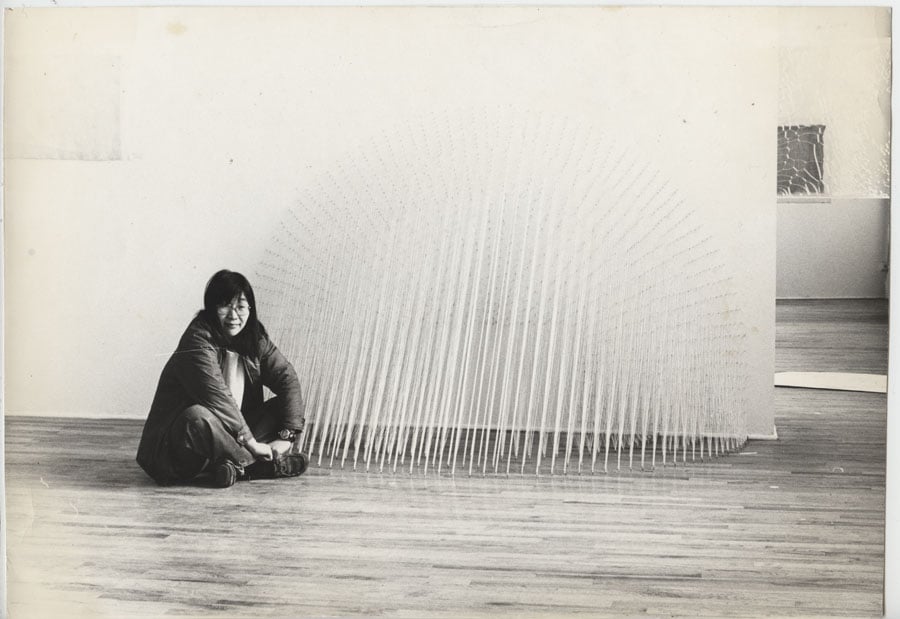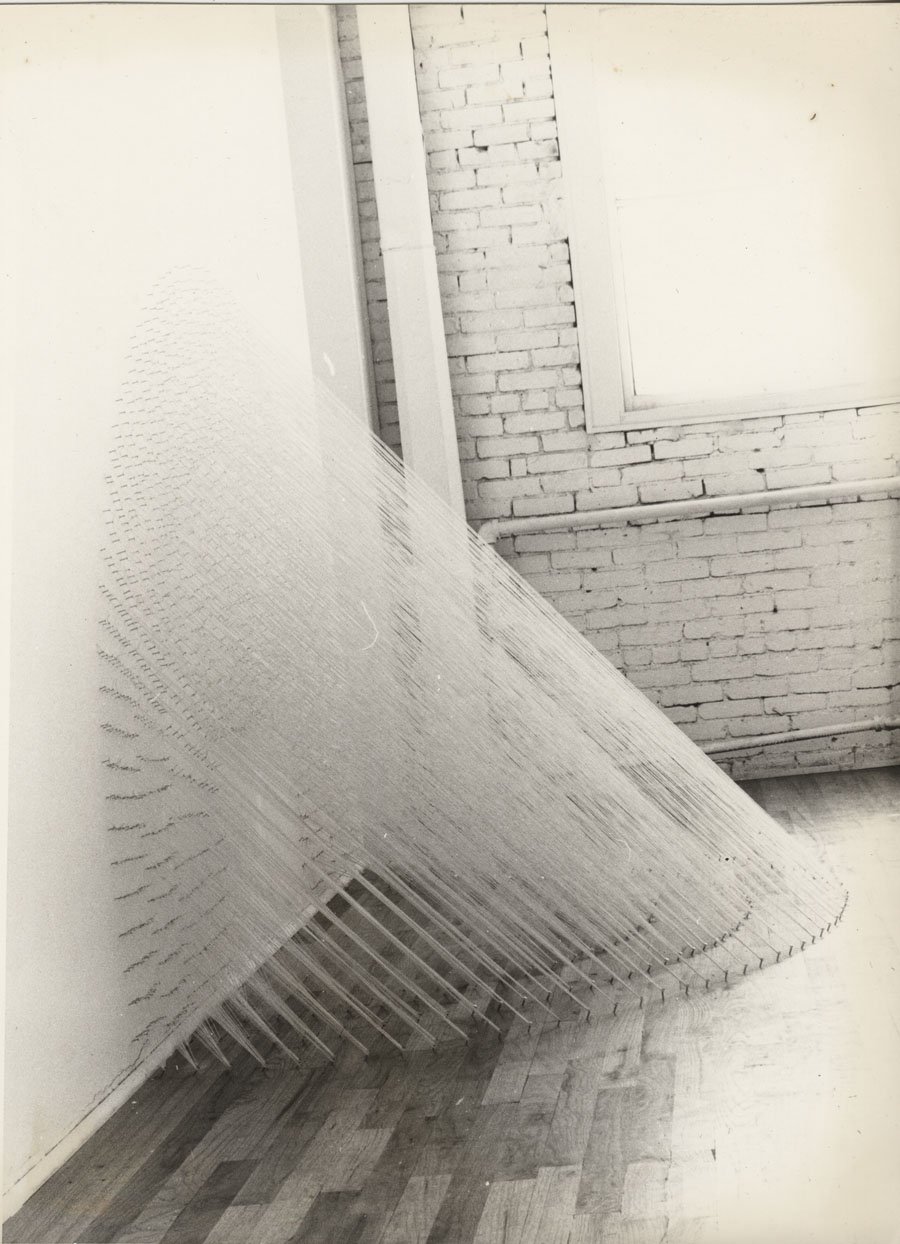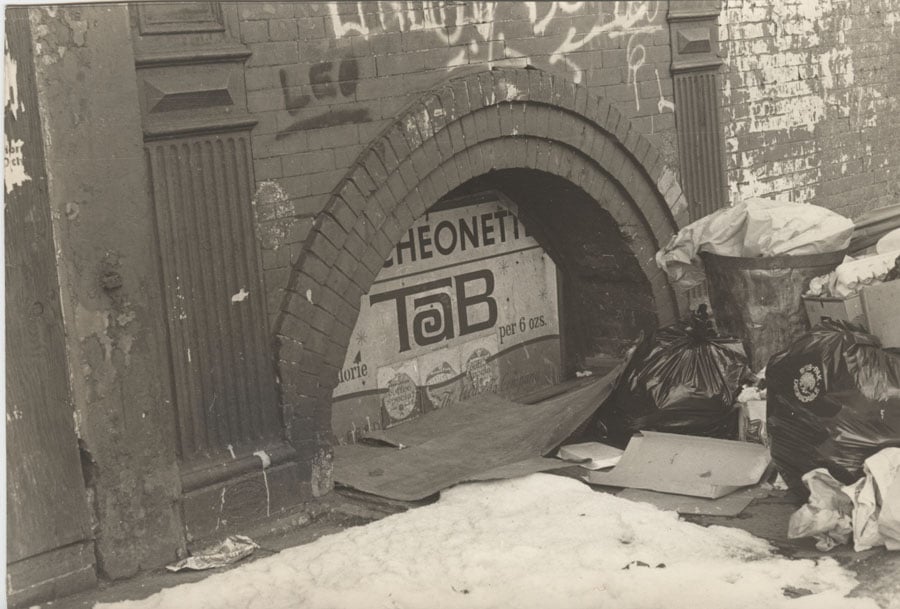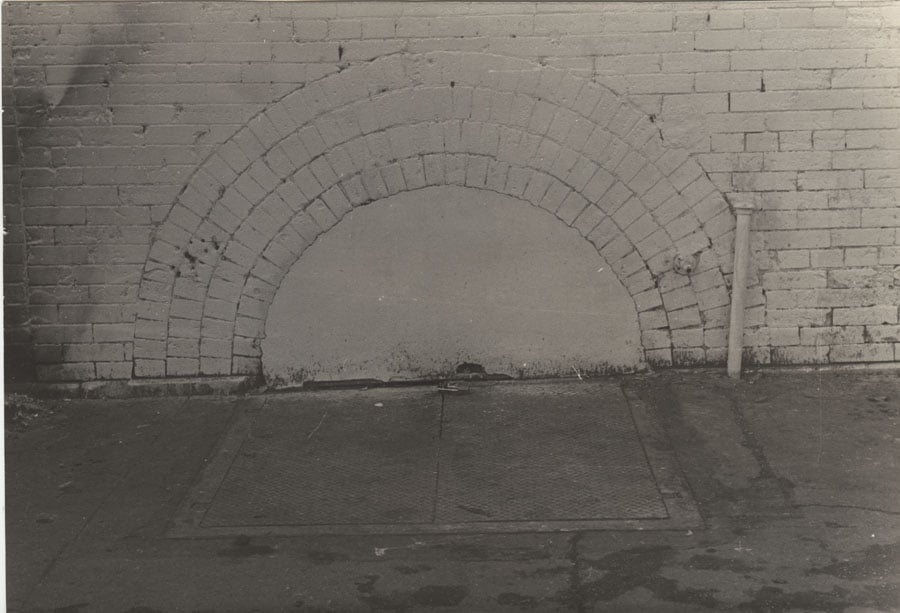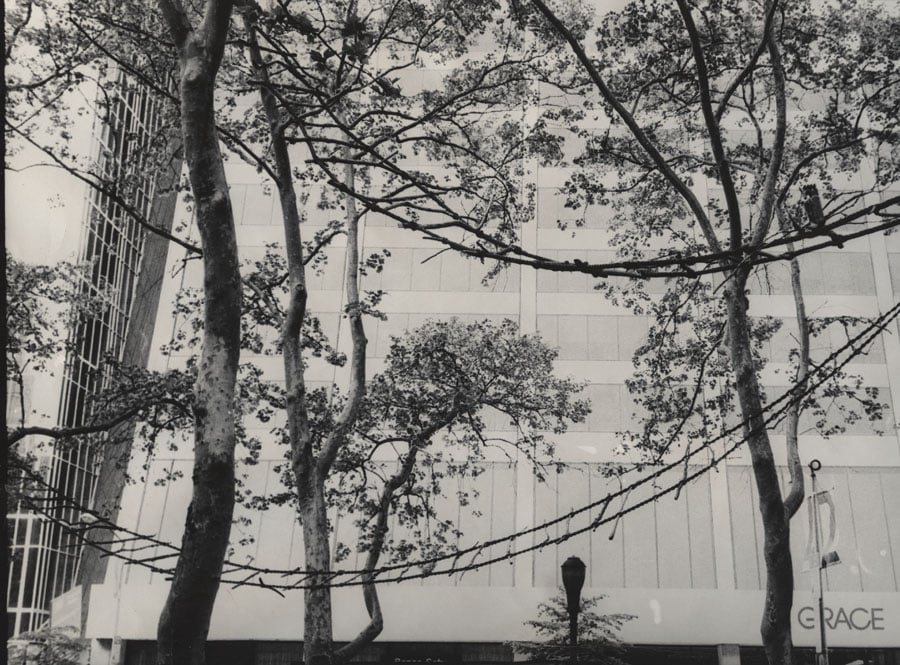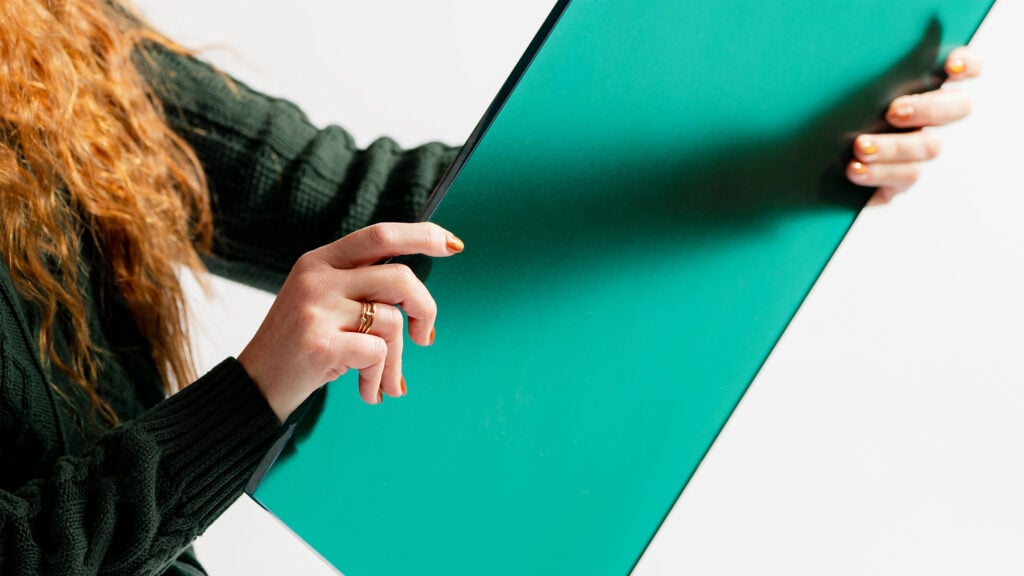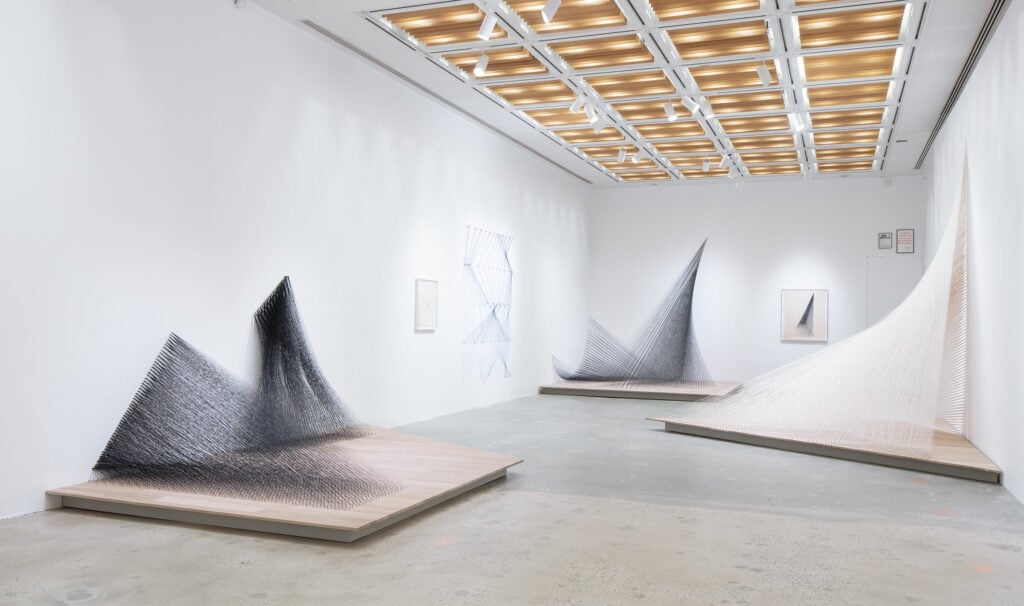
May 17, 2022
Manhattan’s Japan Society Explores Artist Kazuko Miyamoto’s Relationship with her Studio Architecture
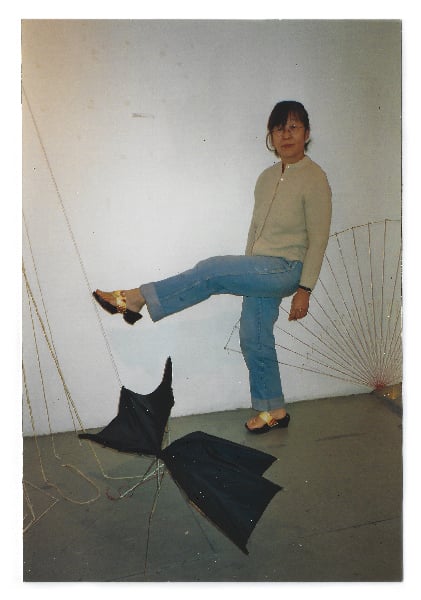

Miyamoto began the series a decade after moving to the United States from Japan and studying painting at the Arts Student League. During the Minimalist boom of the ‘70s, she focused on the male-dominated movement’s potential with light, space, and gesture—the thread and nail constructions reveal her interest in subtle mark-making within the space through laborious gestures. A longtime assistant and close friend of conceptual artist Sol Lewitt, a black and white photograph from 1981 shows Miyamoto nude and standing on her shoulders in front of LeWitt’s grid sculptures. This show opener image at the Japan Society sets the tone by highlighting the artist’s intuitive fusion of corporality and Minimalist art—not to mention her satirizing of the era’s heady exclusivity.
“Maintaining the series’ integrity and intention while capturing the milieu of the avant-garde artists’ studios of the time,” were the goals of the exhibition curator Tiffany Lambert who invited the industrial design studio Ransmeier Inc. to recreate the sculptures at the Japan Society’s galleries. “Miyamoto incorporated the architecture of her surrounding, especially her studio spaces,” she adds.
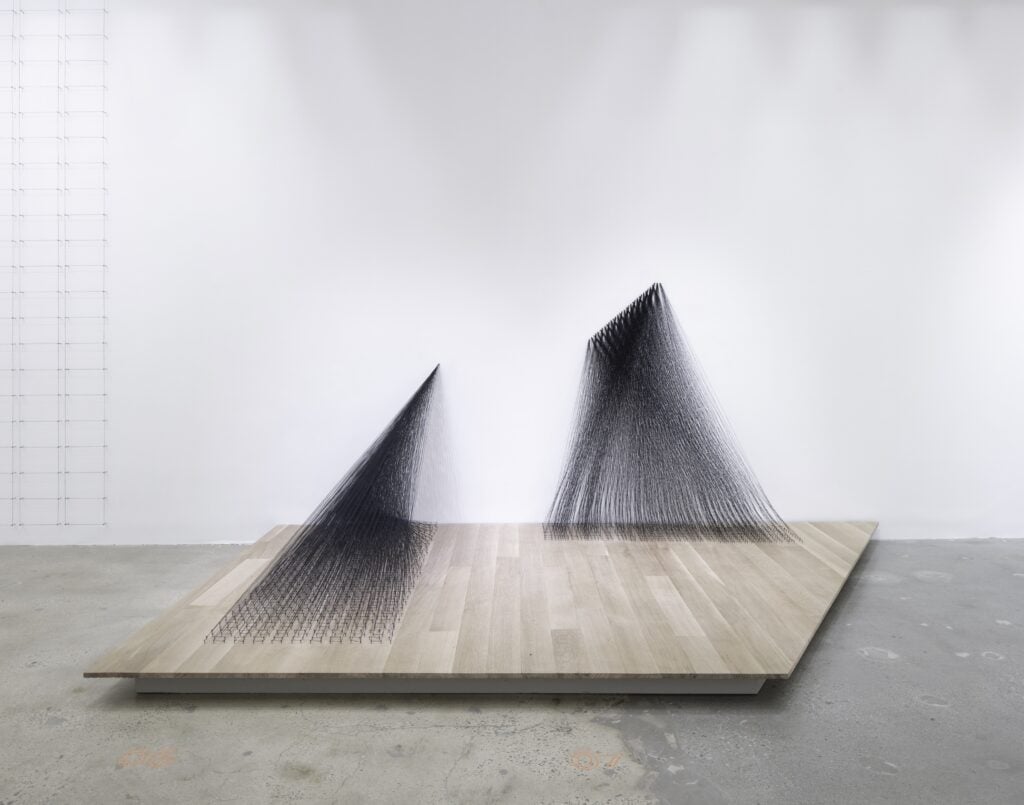
Introducing the works’ immediacy on the institution’s concrete floors required designing hardwood platforms that elevate the details of each construction and salute their original site. “We decided to create a small floor to engage with each work’s architectural element,” Leon Ransmeier explains. “Arduous and slightly violent,” are words the designer uses to explain the ten-day installation process, “which involved hours of hammering and paying attention to capture the structures’ atmospheric light.” Male and Female, which Miyamoto created in 1974 and 1977 respectively, show black threads that run through the white wall and wooden platforms with kinetic energy, at once heavily contained and explosive.
Ransmeier Inc. first got their hands into exhibition design with a show of Eames products at Herman Miller’s midtown showroom and Artforum’s lounge at the Armory Show, but installing Miyamoto’s kimono series also made use of their experience in retail design. “We paired our familiarity with textile hanging systems with research on kimono hangers,” Ransmeier says. “We created a dry counterpoint to emphasize the textiles’ highly personal texts and images as well as their artifact-based quality.”
The show’s third gallery displays the kimonos which the artist made with found objects between the 1980s and 2000s on metal assemblages made with industrial extrusion. From a textured robe created with folded Japanese newspaper (1990) to a family heirloom iron-on transferred with an image of nude Miyamoto on a ladder (1987), the kimonos, as well as the string constructions, according to Lambert, “speak to a performance towards a minimal language and strategies of different geometries, materiality, and repetition.”
Would you like to comment on this article? Send your thoughts to: [email protected]
Related
Projects
Studio De Zwarte Hond Reimagines Dutch University with Circular Renovation
The Herta Mohr building showcases how resourceful reuse can transform a legacy structure into a sustainability paradigm.
Products
4 Manufacturers Lead the Way in Sustainable Surfaces
3form, Corian, Cosentino, and Wilsonart offer some of the most transparent surfacing products on the market.
Projects
This Arkansas Institute Brings a Holistic Vision to Health-Care Design
Designed by Marlon Blackwell Architects, Heartland Whole Health Institute weaves together nature, wellness, and architecture to reimagine how we care for the body and mind.



